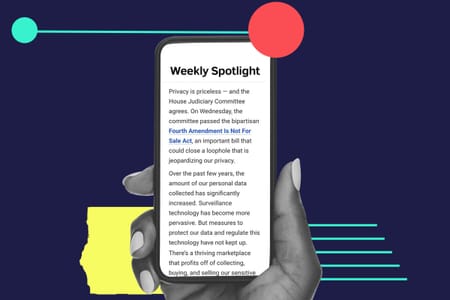Sarah Turberville
Author

Senator Dick Durbin
Chair, Senate Judiciary Committee
224 Dirksen Senate Office Building
Washington, DC 20510
Senator Chuck Grassley
Ranking Member, Senate Judiciary Committee
224 Dirksen Senate Office Building
Washington, DC 20510
Dear Chairman Durbin and Ranking Member Grassley:
We applaud you for investigating the Supreme Court’s process for handling emergency cases, called a “shadow docket.” Our organizations are committed to a transparent, accountable, and independent judiciary, and are concerned that the shadow docket is a significant obstacle to those goals.
As the Senate Judiciary Committee examines this important issue, we urge its members to consider that the Supreme Court’s use of the shadow docket is a systemic issue with consequences that extend beyond any single case. The two defining characteristics of shadow docket cases are that the parties do not provide full briefing and argument in advance, and the resulting opinions are frequently unsigned and often contain little or no explanation of the Court’s reasoning. The apparently ad hoc nature of this decision-making is in stark contrast with the bulk of the Court’s work. The Court’s lack of transparency in its decision-making ultimately undermines its actual and perceived legitimacy, and should concern everyone.
The Court has increasingly relied on the shadow docket to resolve complex cases with significant impacts on the rights of millions of people — all without full briefing, oral argument, or often even explanation of the reasoning behind the order.1 Through the shadow docket, the Court has often granted or removed stays, overruling lower courts that acted based on more complete information, or taken up cases that have not yet been decided by the lower courts. It has done so even in capital cases that then resulted in the deaths of federal prisoners whose executions were stayed by lower courts.2
One of our organizations, the Project On Government Oversight, recently convened a group of former state and federal judges and a leading judicial scholar to study ways to ensure the impartiality and legitimacy of the Supreme Court. A copy of their report accompanies this letter. They concluded that the shadow docket was a cause for concern, noting:
we need the disciplined development of precedent to guide future decisions, as well as disciplined procedure to produce that law. Adhering to the process of full briefing and arguments and publication is an important facet of this obligation, and the departure from these practices is worrisome.3
The Court should dispense with this unpredictable process, which can lead to under-informed and premature decision-making. At minimum, the Court should be required to disclose which justices joined the majority or dissented from shadow docket orders, and each decision should come with a written explanation of the majority’s reasoning, just as merits case opinions do. In addition, these opinions should be more prominently displayed on the Supreme Court’s website, so that members of the public can readily access them.4 Finally, if a shadow docket petition presents an exceptionally pressing or novel issue, the Court should consider granting oral argument, even if the petition is submitted during the Court’s summer recess. As we’ve learned over the last year and a half, justices can quite easily participate in oral argument without physically being at One First Street. These measures will benefit the public and the Court itself, regardless of the majority’s ideological leanings or the specific case at issue.
It is important to recognize that the shadow docket is just one part of a larger problem with a lack of transparency at the Supreme Court. For instance, the public still lacks guaranteed real-time electronic access to the Court’s oral arguments. The pandemic-era practice of streaming live audio of the arguments has been enormously popular and informative, but the Court has not committed to continuing that practice, let alone allowing video coverage. In addition, the justices’ financial disclosures are less thorough than most other government officials’, and the justices are not bound by a formal code of ethics, unlike other federal judges. And the Supreme Court does not have to go through the same public process when creating its rules of procedure that other federal courts do.
As Fix the Court recently observed, “The Court’s power is derived entirely from its perceived legitimacy, and yet time and time again it’s declined to show the public that this legitimacy is deserved.”5 We thank the committee for examining how to help the Court become more transparent and, as a result, more legitimate. Doing so will benefit the Court and the country.
Sincerely,
Sarah Turberville
Director
The Constitution Project at the Project On Government Oversight
Gabe Roth
Executive Director
Fix the Court
Enclosure: 1
cc: Members of the Senate Judiciary Committee

Sent Saturdays
